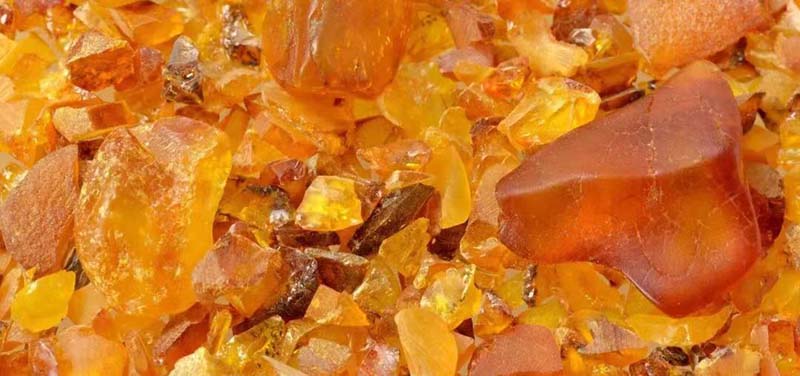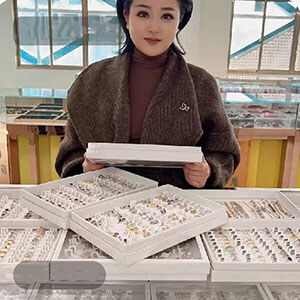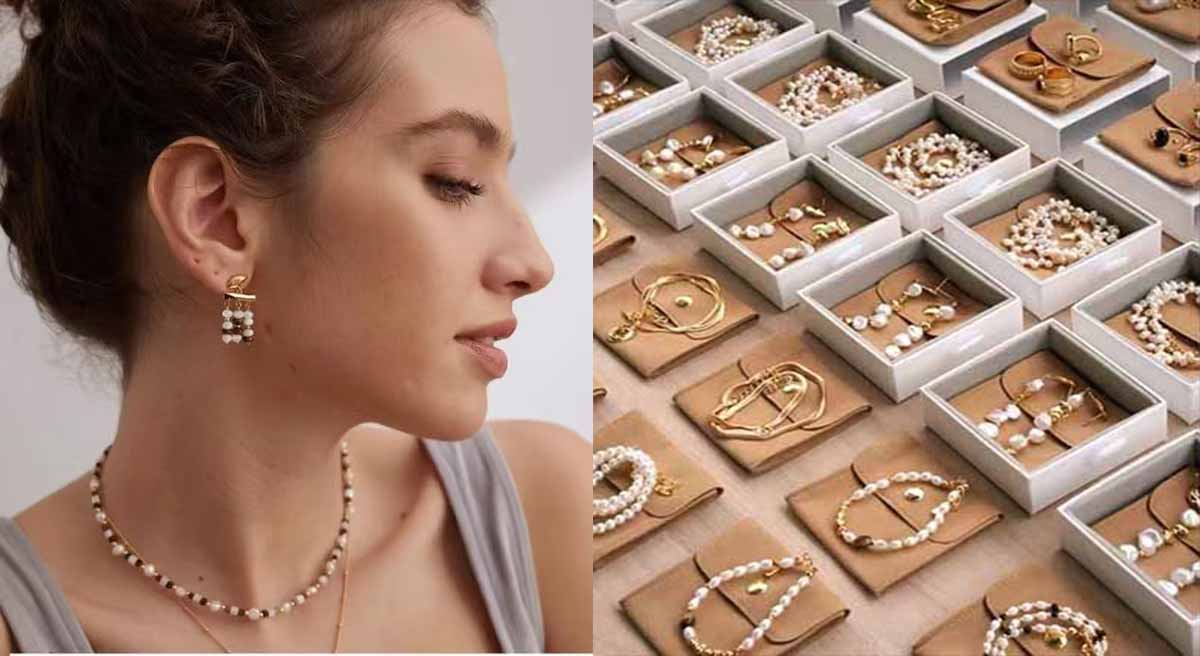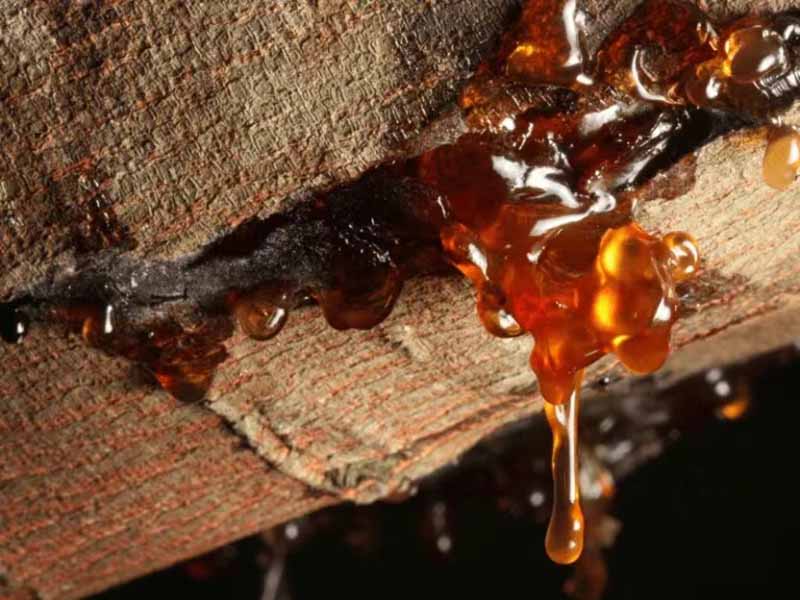
Getting Started – A minute with amber:
Amber, an ancient visitor, is more than 10 million years old.
It is a fossilized resin that was buried in the earth tens of millions of years ago and produced following specific chemical changes, and is an organic mineral.
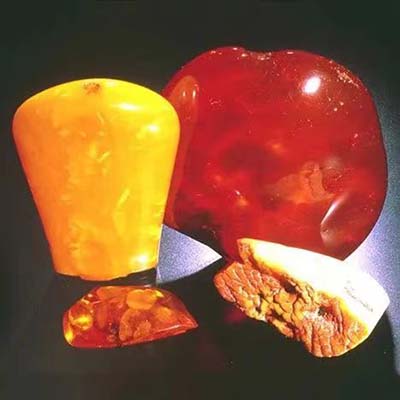
Amber not only retains the patterns created when the resin first flowed, but ancient insects or plant debris are often visible inside.
Researchers have uncovered around 1,000 extinct animal species and numerous sorts of plant debris in amber, allowing humans to completely grasp past ecosystems.
The name amber derives from the Latin word meaning “essence”. In ancient China, amber was known as “tiger’s spirit”, “animal’s spirit”, and “jade”.
Special powers:
It is said that amber is “the spirit of a dead tiger transformed into stone” or that amber is tiger tears. These legends imply that pSeople speculated about amber and pursued it.
It is implied that amber was believed to have the ability to ward off bad luck and calm the spirits in the house.
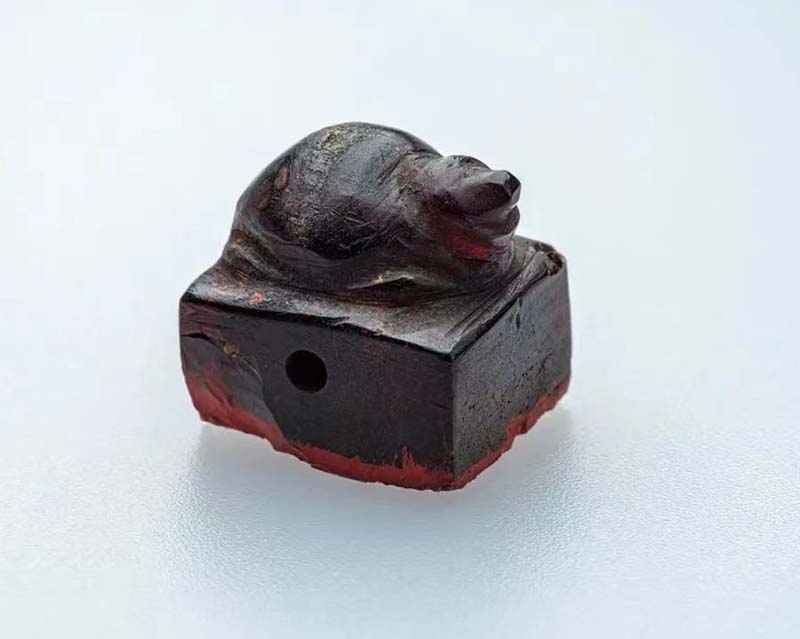
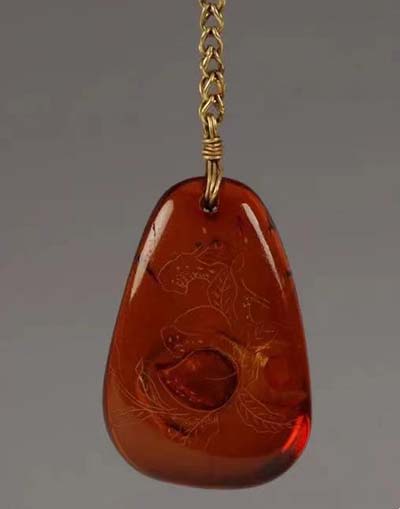
Amulet:
Although amber is one of the softest types of gemstones, it has been used in jewelry since prehistoric times and was one of the earliest amulet stones.
Archaeological finds shAow that carved amber ornamentation existed in China as early as the Neolithic period. Amber figurines resembling tigers have been unearthed from time to time in tombs dating back to the Warring States period and the Han Dynasty.
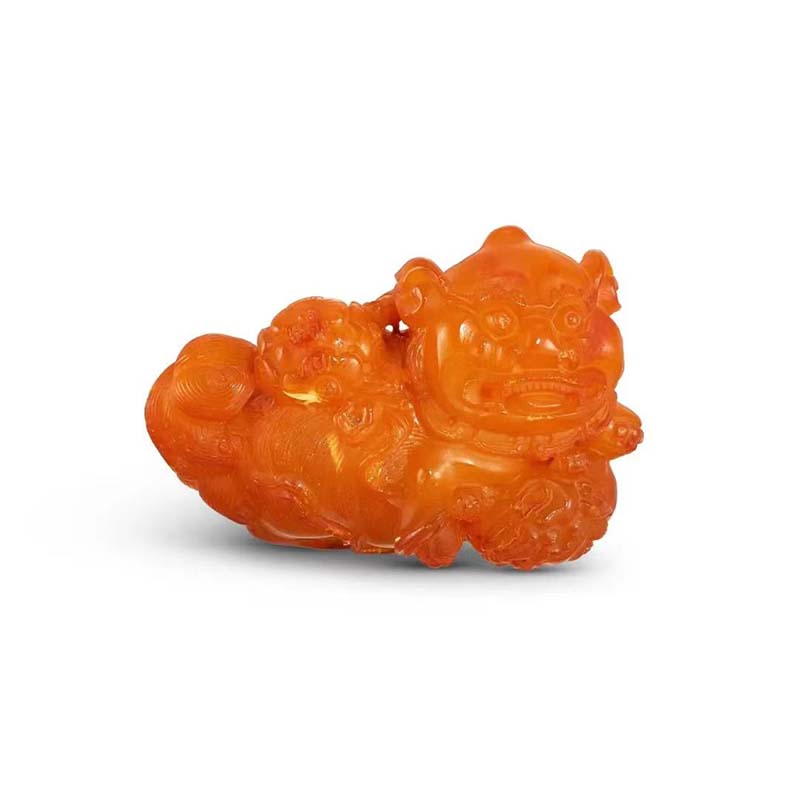
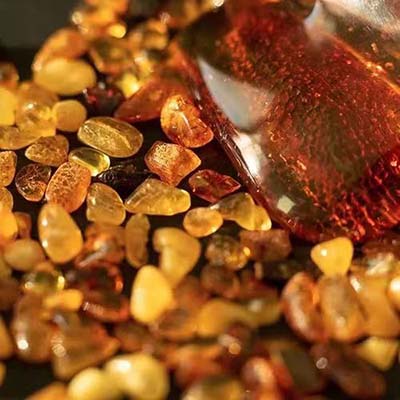
Amber was used as a medicinal gemstone for hundreds of years, from the Middle Ages to the early twentieth century.
Europeans thought that amber and its resinous extracts might be utilized to treat and alleviate numerous health conditions.
Amber Origin:
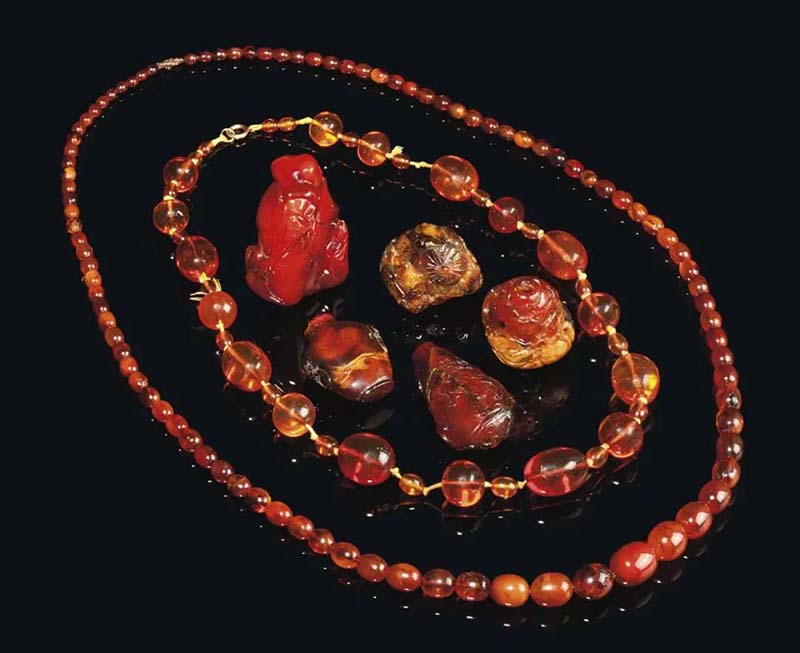
Amber is produced in many places, primarily in the European countries bordering the Baltic Sea: Poland, Germany, Denmark, and Russia; the Dominican Sea has also produced large quantities of high quality amber; and Chinese amber is primarily from the Tertiary coalfields of Fushun in Liaoning province, with wormwood amber being of high quality.
Advanced – Buying amber like a connoisseur:
1. Gemstone Characteristics
Amber is an organic gemstone. It is an organic mixture of the resin of Pinaceae plants from the Cretaceous to Tertiary periods of the Mesozoic to Cenozoic eras, formed by geological action, containing organic substances such as succinic acid and succinic resin.
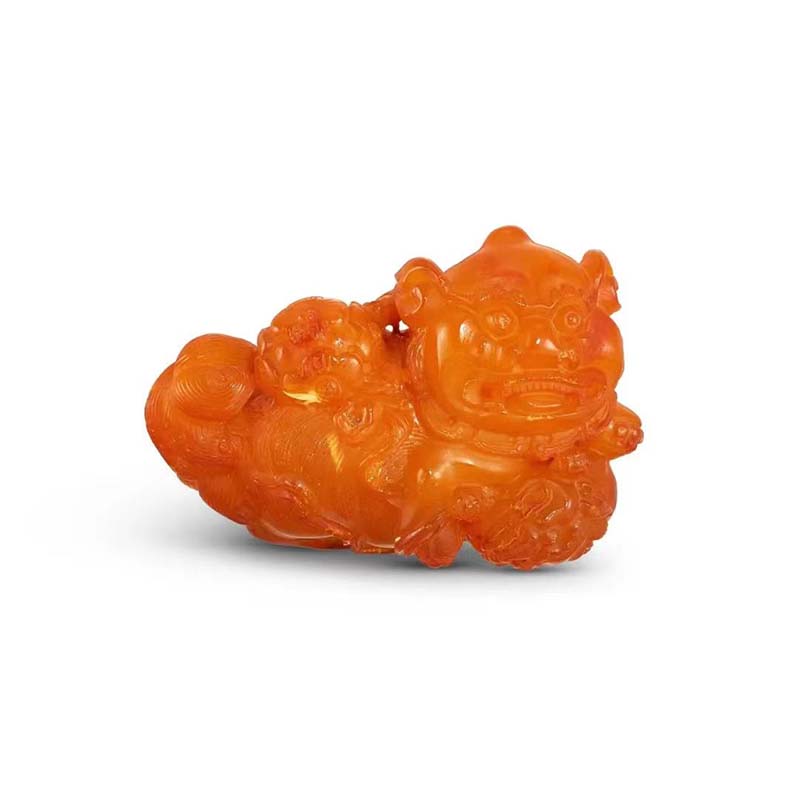
Organic gemstones refer to materials that are naturally created by nature and are constituted partially or totally of organic compounds that may be utilized in jewelry and ornamental products. Pearl, coral, amber, and so forth are all good examples.
Amber is amorphous and occurs in a number of various forms. Colors display light yellow to honey yellow, yellowish brown to brown, light reddish brown, light red, light greenish brown, dark brown, orange, red and white. Blue, pale green, and lavender are uncommon colors. From completely see-through to nearly see-through, translucent, and opaque.
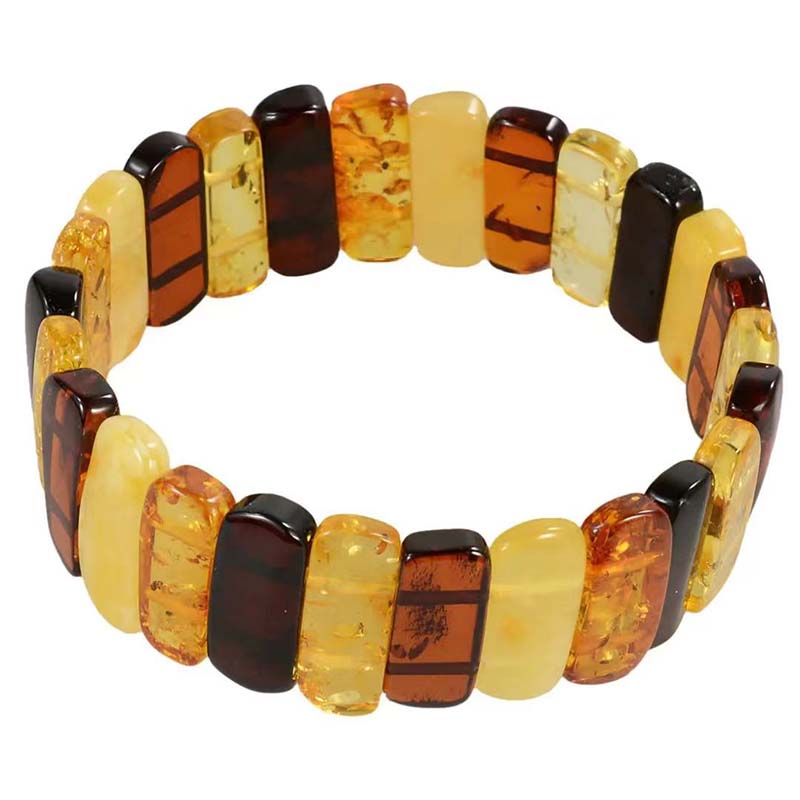
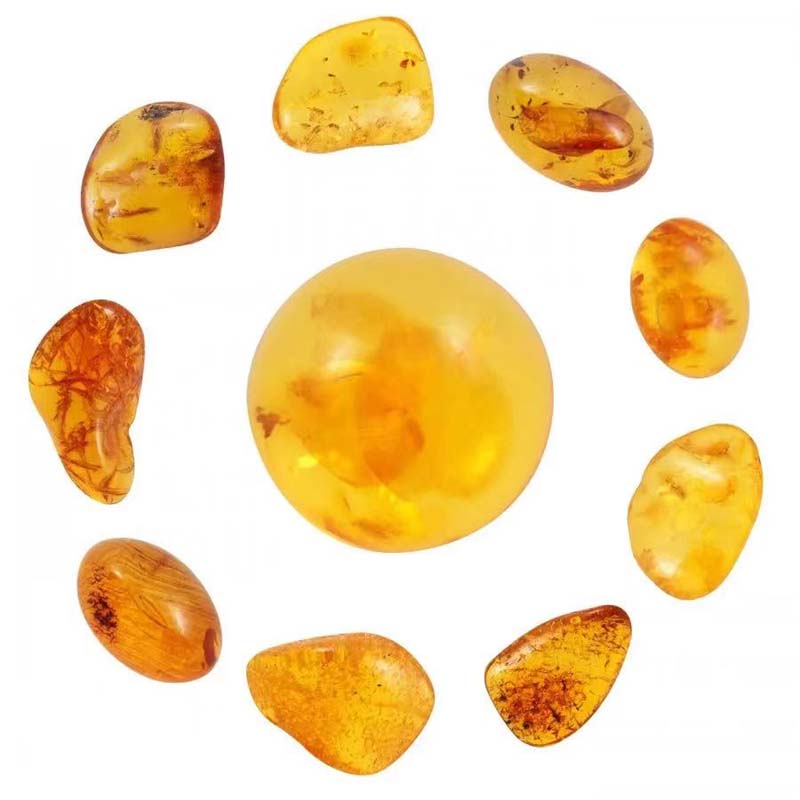
Physical property
Amber is an electrical insulator, and rubbing it against a flannel can generate static electricity, which can suck up tiny pieces of shredded paper.
The specific gravity of amber is very light, it is the lightest gemstone in nature and can float in water.
It has a very low Mohs hardness of 2 to 2.5, whiPch can be easily scratched with a knife, and some amber can even be scratched with a fingernail.
2. Types of Amber
Amber is frequently named in commerce based on its origin, color, appearance, inclusions, and fluorescence. The principal kinds of amber, together with the conventional commercial nomenclature, are the following:
① Golden amber
Amber with a golden yellow color and high transparency, the most common type of amber.
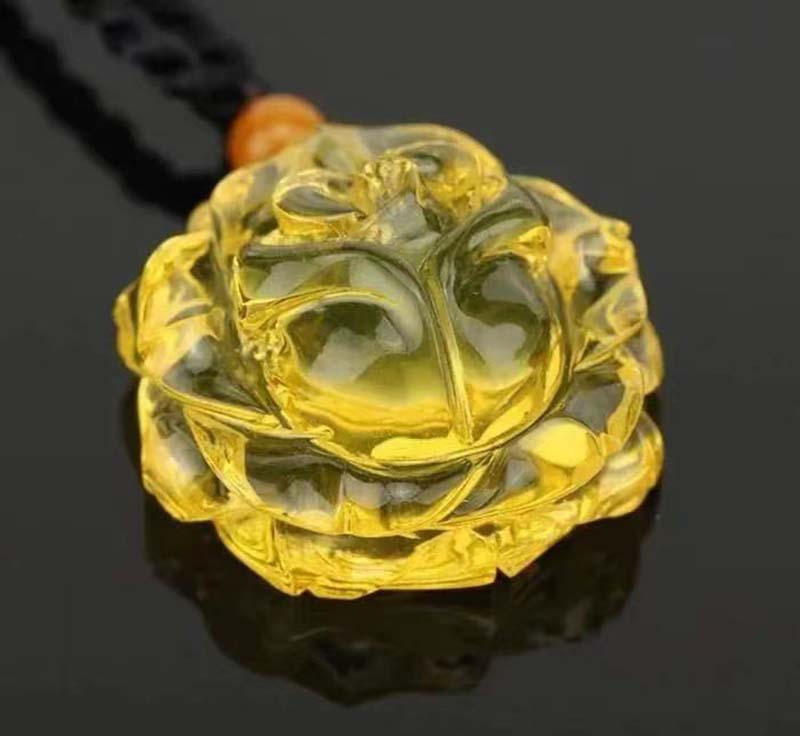
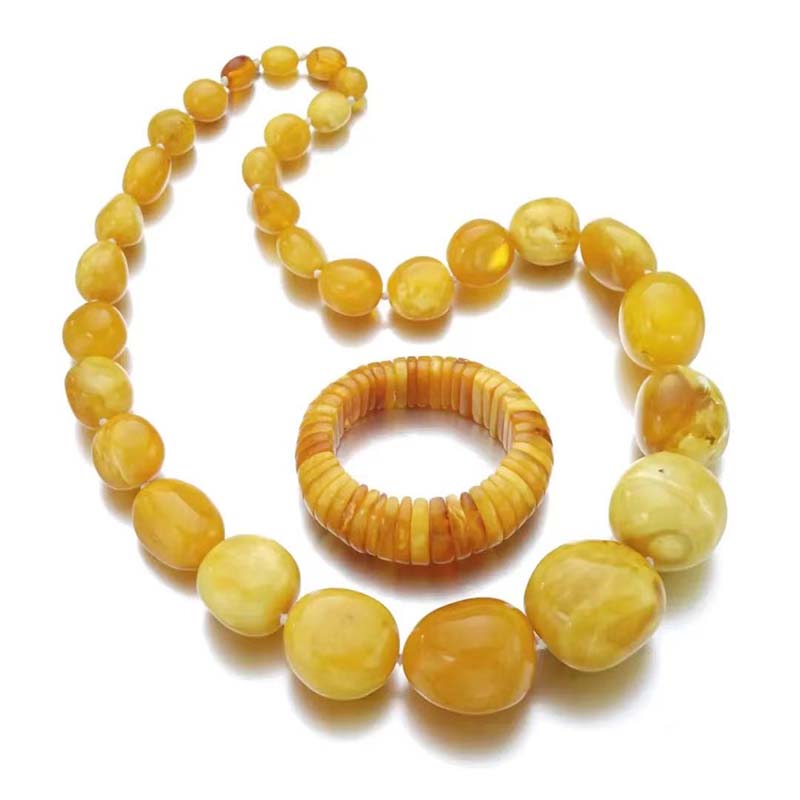
② Beeswax
Translucent to opaque amber that can be a variety of colors, with golden yellow, brownish yellow, egg yellow and other yellows being the most common. It has a waxy, resinous luster or a glassy luster.
Some of the more popular colors are Chanterelle, Lemon Yellow and White.
Beeswax and amber are as subordinate as Paraiba tourmaline is to tourmaline and colored diamonds are to diamonds.
③ Gold stranded beeswax
When transparent gold and translucent beeswax are twisted together, a yellow amber with twisted patterns is formed.
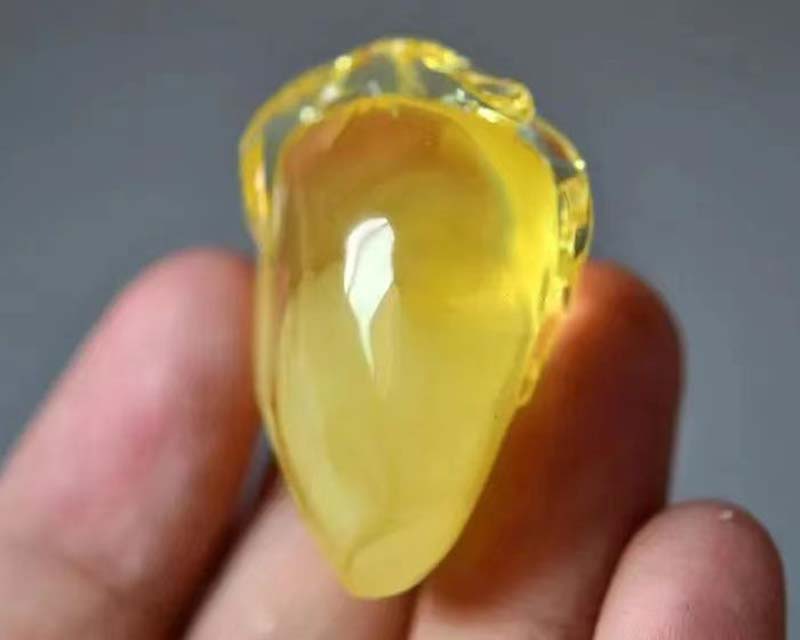
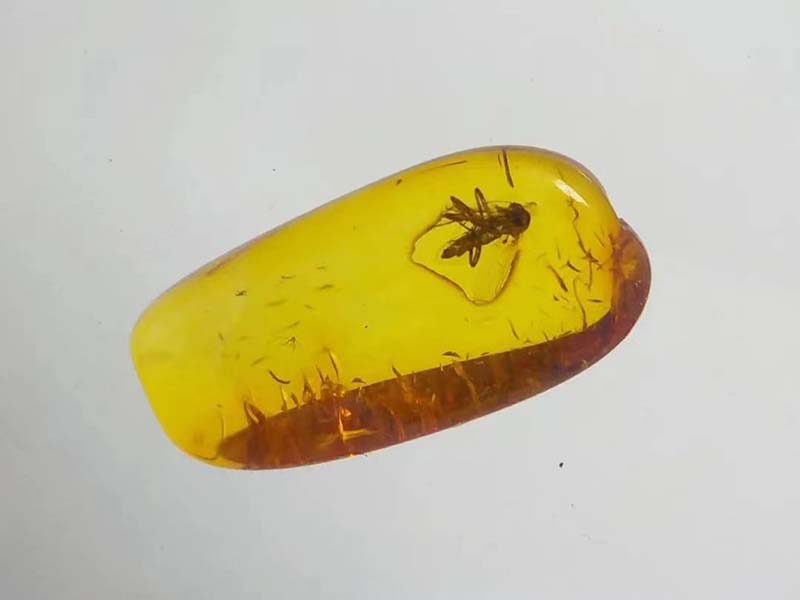
④ Insect amber
Amber containing the remains of animals and plants, of which those containing winged insects, ancient insects or plants are the most precious.
It is capable of preserving the form and life scenes of prehistoric creatures in three dimensions, and in some cases.
It can provide scientists with an important basis for researching ancient creatures and climatic environments.
⑤ Blue Perch
Amber with a yellow, yellowish-green or brownish-yellow body color and a blue or bluish-green tint to the surface reflecting light in the natural environment. The best blue amber is Dominican sky blue, which is called the national treasure of the Dominican Republic. It is also known as the national treasure of the Dominican Republic, followed by the golden blue amber of Burma and the blue-green amber of Mexico.
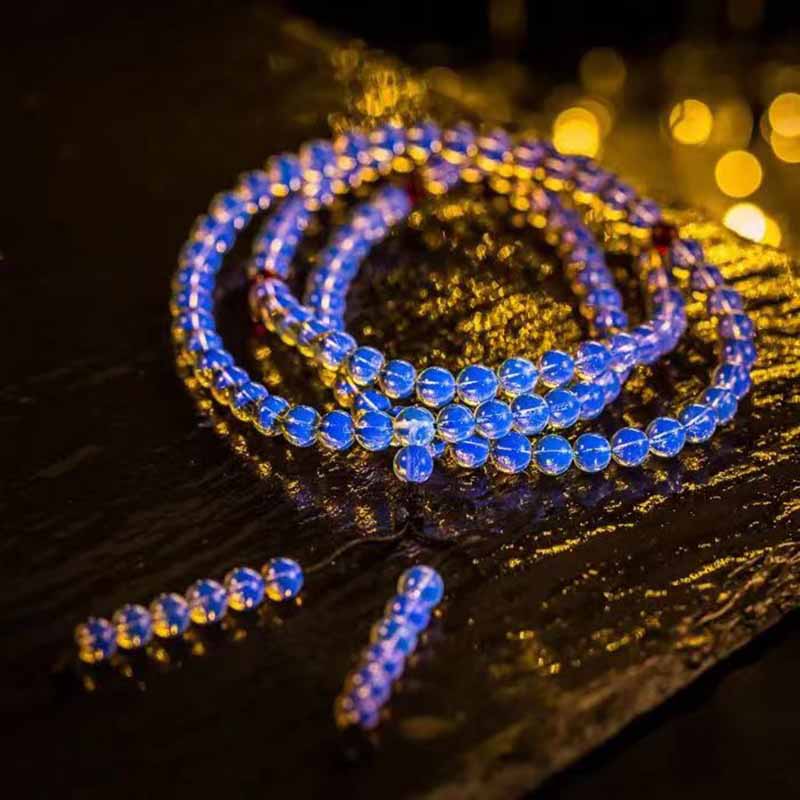
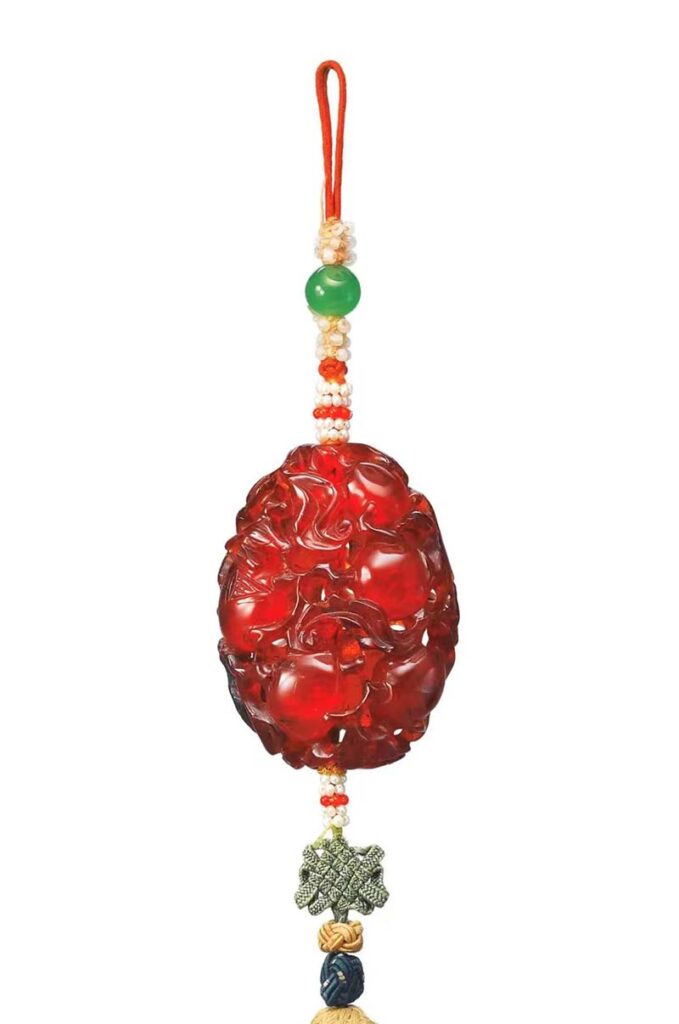
⑥Red amber
Red transparent amber, also known as red amber. Amber that is as red as blood is the finest amber, and is also known as cherry amber.
Most of the blood amber on the market is yellow or brown amber that has been heated to a red color.
⑦ Flower amber
There are a large number of disk-shaped cracks inside the flower amber, which is commonly known in the industry as “sun rays”.
When exposed to sunlight, it produces a bright reflection that is very beautiful. Many of the flowers on the market are artificially heated to produce popping flowers, also known as popping amber.
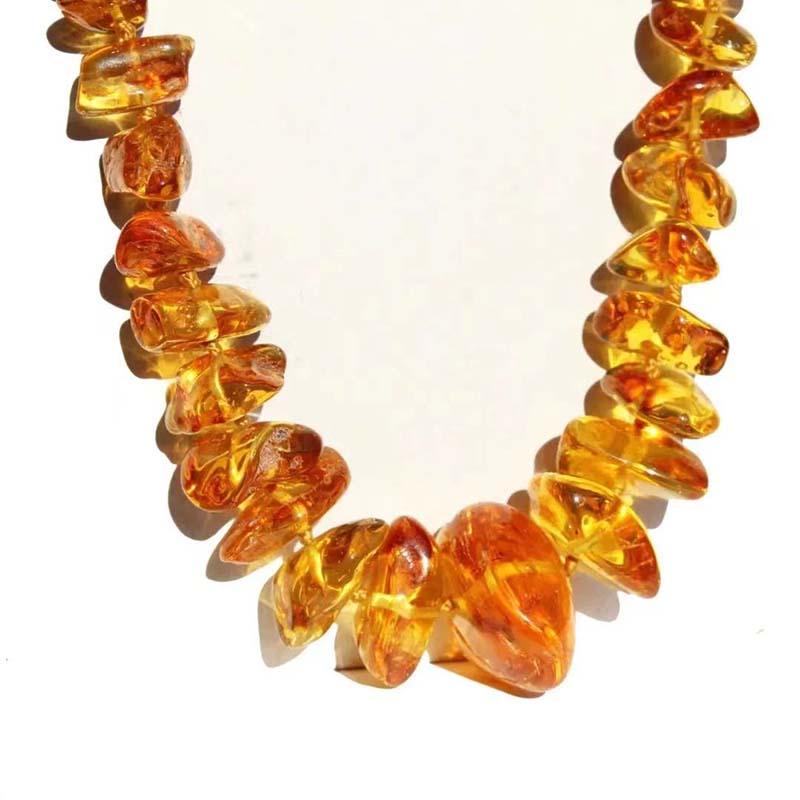
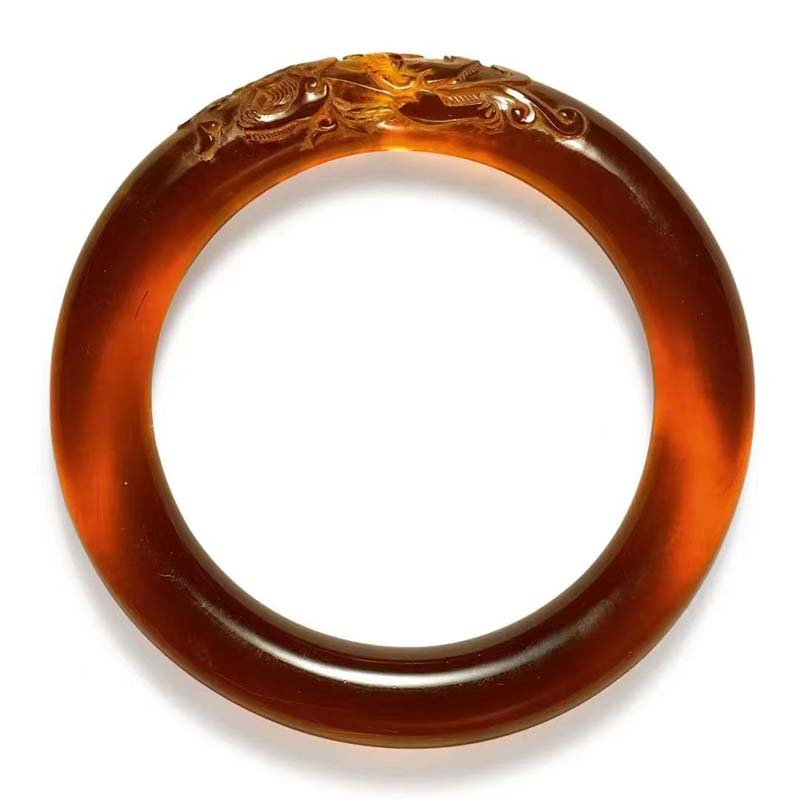
⑧ Brown Amber
The color of brown perth shows maroon, brown, brown, with a flow pattern similar to agate, smooth lines, very natural.
In addition to the above, there are other amber varieties such as Root Perch, Green Tea Perch, Cataract Perch, Stone Perch, Spirit Perch, Water Perch, Ming Perch, Wax Perch and so on.
High-end section – don’t be fooled:
1. Optimization of amber
During the birth of amber, if it is a bit windy, it will become cloudy or have a lot of small bubbles, in short, it does not look so good.
In order to improve the quality or value of amber, amber is often optimized by merchants. The following are some of the most common ways of optimizing amber on the market today:
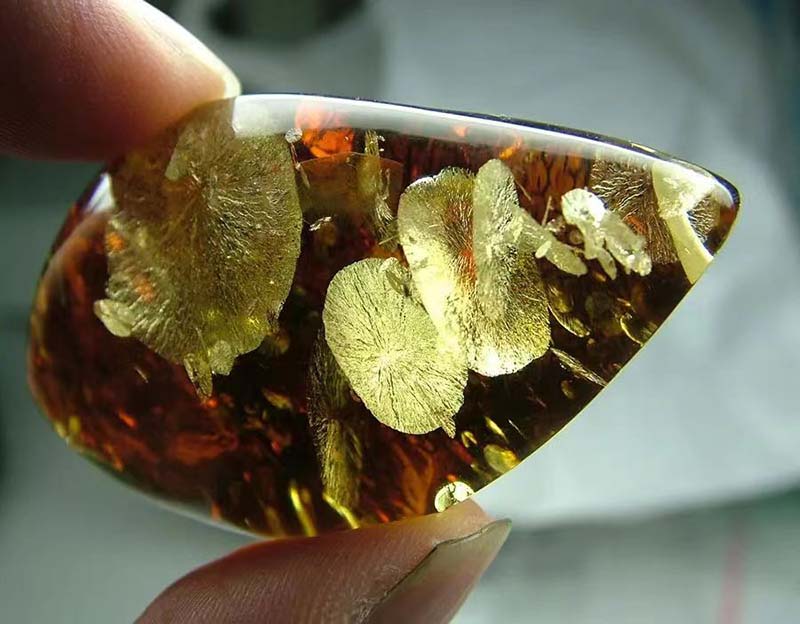
① Heat treatment
In order to increase the transparency of amber, cloudy amber is heated in vegetable oil and becomes more transparent.
During the process, foliated cracks, often called “water lily leaves” or “sunbursts”, are produced, which are caused by the bursting of small air bubbles due to thermal expansion.
Natural amber can also burst due to geothermal heat, but under natural conditions the heat is not uniform and the bubbles cannot all burst, whereas in treated amber the bubbles have all burst, so there are no air bubbles.
Some amber is heat-treated to make it more transparent; others are heat-treated to deepen the color, which is more common in beeswax.
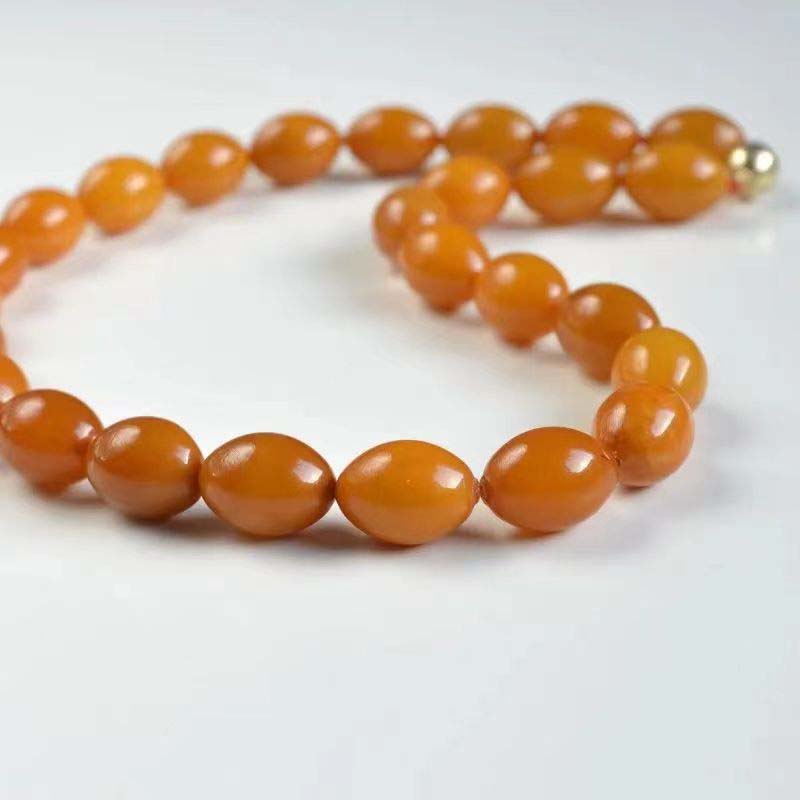
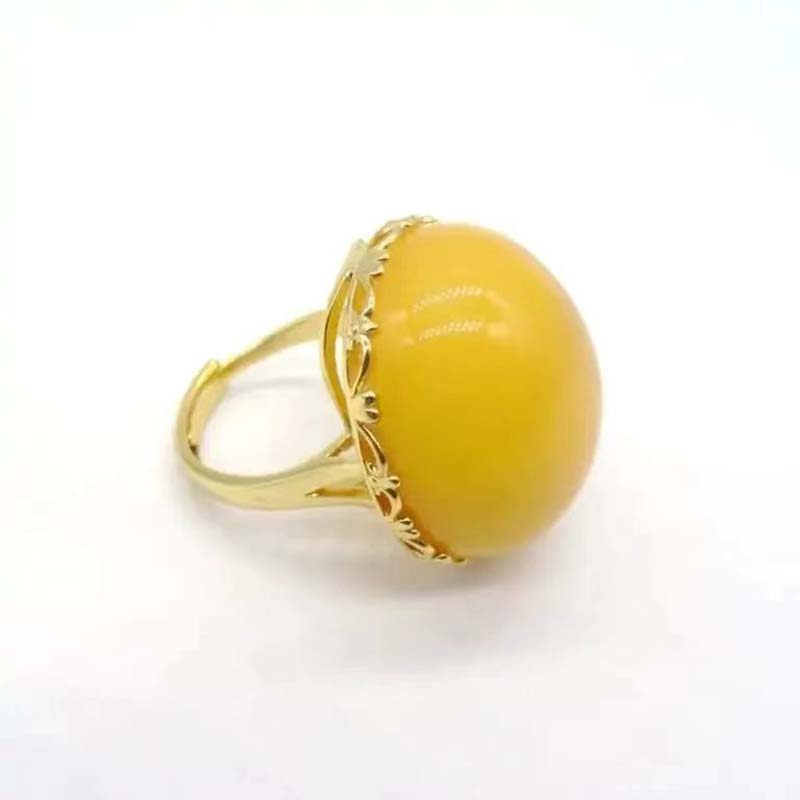
Another common heating method is to place the beeswax in a high temperature device to accelerate the darkening of the beeswax’s exterior color, which is often referred to as baked beeswax. The color of this type of beeswax is a bit more intense than that of unheated beeswax.
Beeswax, after years of playing and wearing, will darken in color, similar to turquoise after playing will be due to “pulp” and darken in color.
This kind of beeswax because of humanities, history and other factors and relatively high value, known as the old beeswax. However, there are not so many old beeswaxes on the market, so some merchants use heat to bake the color to create the so-called “old beeswax”.
Heat treatment of amber is recognized by national standards and belongs to the category of optimization, which will not be shown on the certificate.
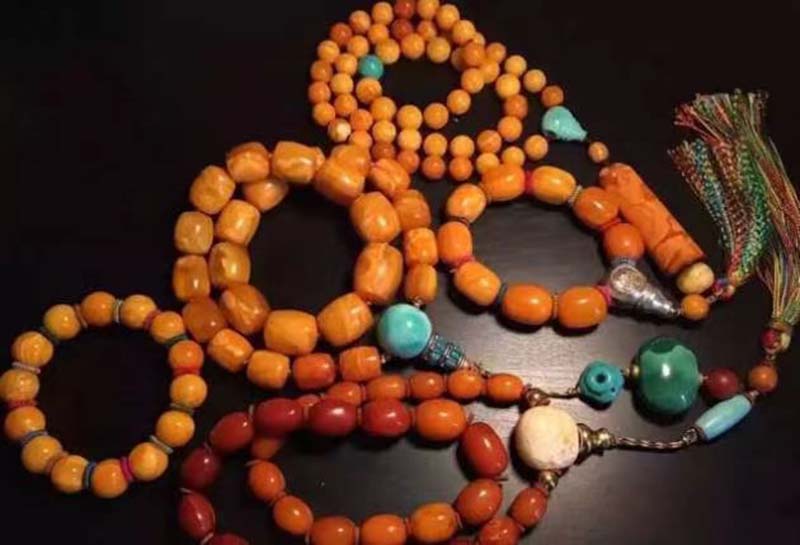
②Dyeing
Amber will turn red after being exposed to air for a number of years. Dyeing it red can mimic this aging characteristic and pass it off as so-called “old beeswax” for sale.
However, dyed beeswax is very easy to recognize, and magnified observation reveals that the color is only present in the cracks. In addition to the red color, some merchants will also dye beeswax into a rare green color to pretend to be green teapot.
③Pressed amber
As some amber pieces are too small to be used directly for jewelry making.
Therefore, these amber chips are sintered under appropriate temperature and pressure to form larger pieces of amber, which are called reconstituted amber, pressed amber, second generation amber, etc. This type of amber does not have the fluidity of natural amber.
This type of amber does not have the flow structure (flow pattern) of natural amber, but shows a syrupy churning structure (stirring pattern).
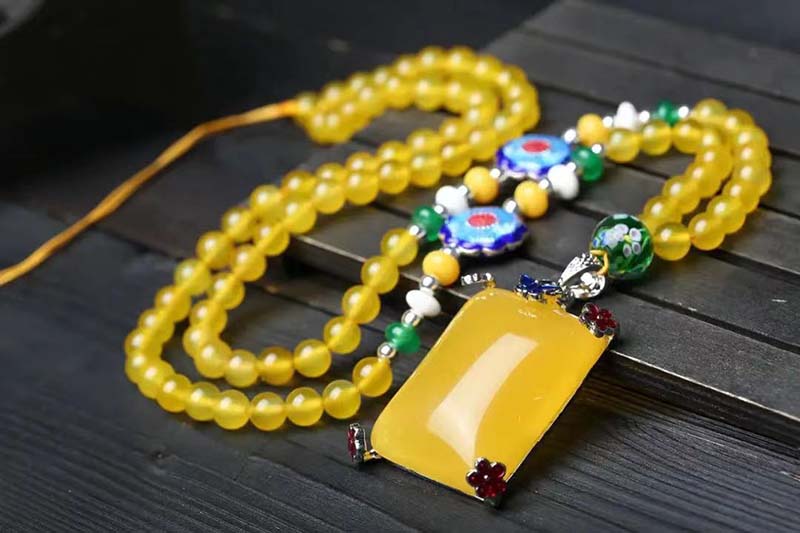
2. Amber imitations
①Glass and chalcedony
Glass and chalcedony can imitate amber in color, and for those who have not come into contact with amber, it is difficult to distinguish them from amber at first. However, the physical properties of glass and chalcedony are very different from those of amber, and you can use the method of friction and electricity absorption to distinguish amber from them.
②Plastic
Plastic is very similar to amber in texture, color, warmth and electrical properties. Coupled with the simplicity and very low cost of the production process, it is the mainstay used to pass off as amber.
What does amber smell like?
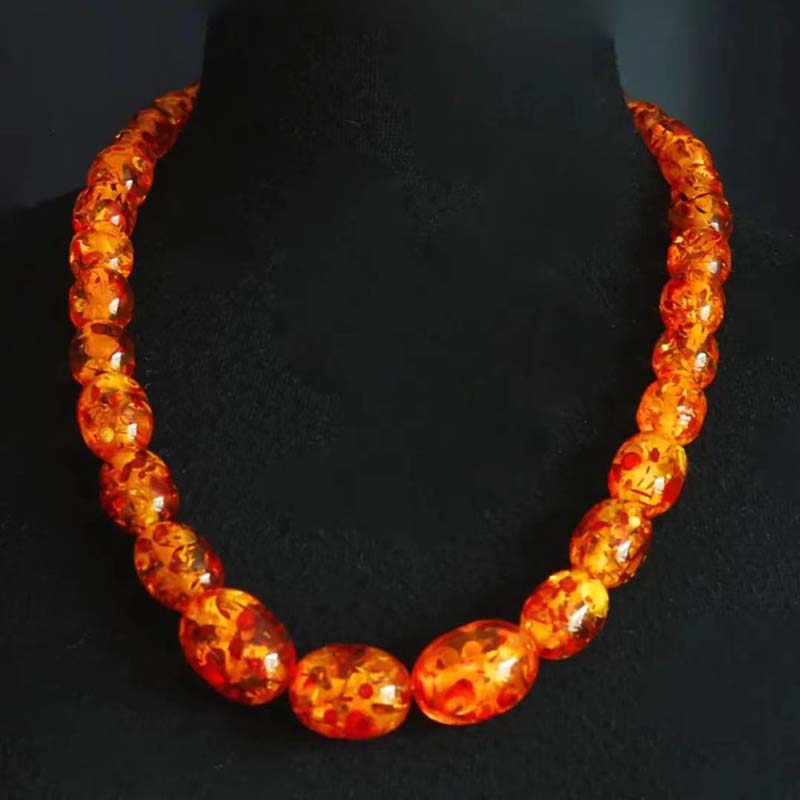
Although in the early days it was easier to distinguish plastic from amber, with the development of technology, today’s plastics not only mimic the color of amber, but also create a disc-shaped fissure that is very similar to the “sun’s rays”, which makes plastics very easy to pass off as the reaWl thing for those who are unfamiliar with amber.
The difference between the two can be tested with a hot needle, i.e. a burning hot needle.If the amber is plastic, it will emit a variety of odors, while the amber may emit the aromatic smell of burning rosin.
Note that this method may cause damage to the goods, and will affect the return and exchange of after-sales service, is generally not recommended to use.
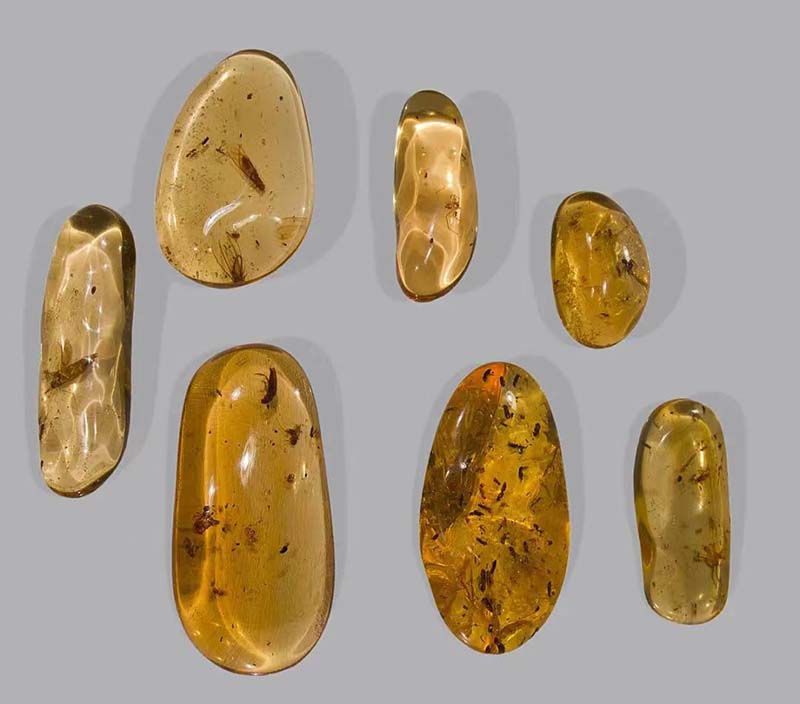
③Coba Resin
This is a resin of very recent geological age (about 1 million years) that is unpetrified, but may contain plant and animal inclusions as in amber, to which it most closely resembles. It requires the use of instruments or reagents to manipulate.
Insert a point of knowledge here: some people will determine the authenticity of amber by fluorescence or rubbing. It is believed that real amber fluoresces under an ultraviolet light and that real amber emits a scent when rubbed in the hand. These methods are very unreliable and cannot be used as a basis for identifying real amber.
If you are not sure of the authenticity of the amber, you should, as a rule, take the amber you have purchased to your local jeweler’s office for testing. These organizations are open to the public.
How to polish amber:
1.Amber rubbing against hard items may roughen its surface and leave fine markings; thus, do not clean amber with harsh objects such as brushes or toothbrushes.
2.To restore the luster of amber that has become stained with dust and sweat, soak it in warm water with a neutral detergent, dry it with your hands and rinse it off, then wipe it clean with a soft cloth, and finally apply a small amount of olive oil or tea oil to the surface of the amber and wipe it gently, and then use a cloth to wipe off the excess oil stains.
3.The best technique to preserve amber is to wear it for an extended length of time. This is due to the fact that human body oils may enable amber to shine more and more as you wear it.
